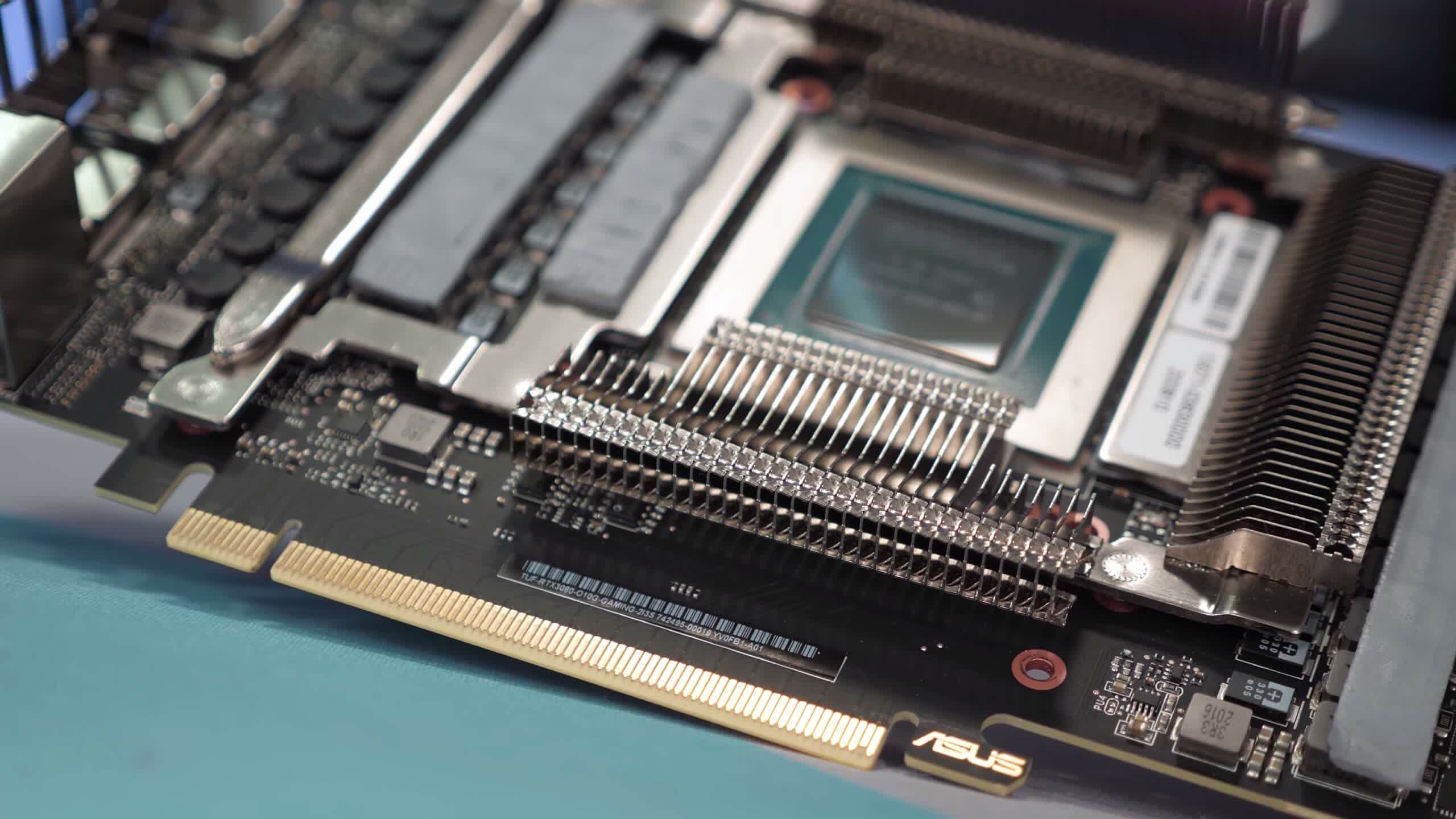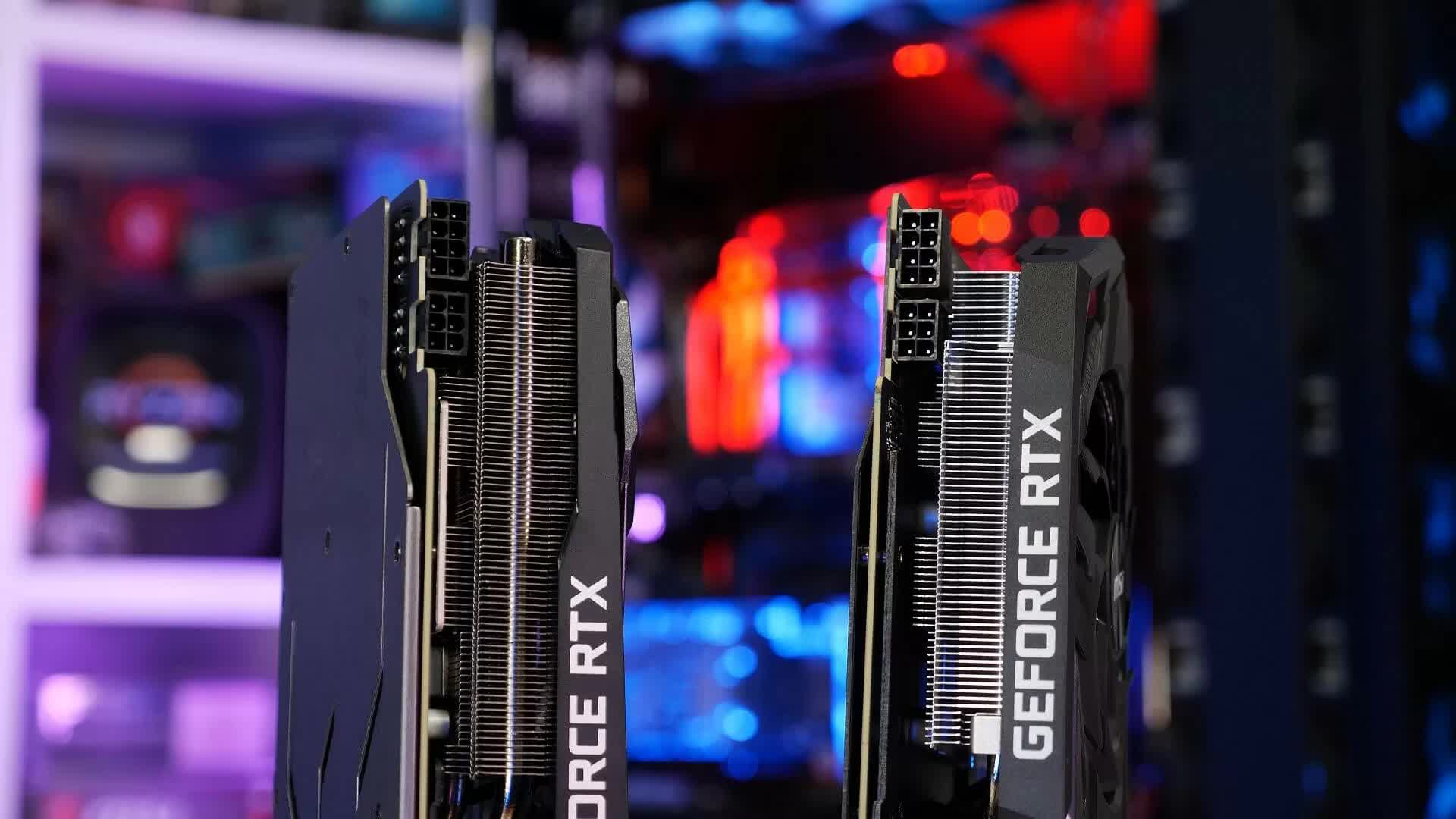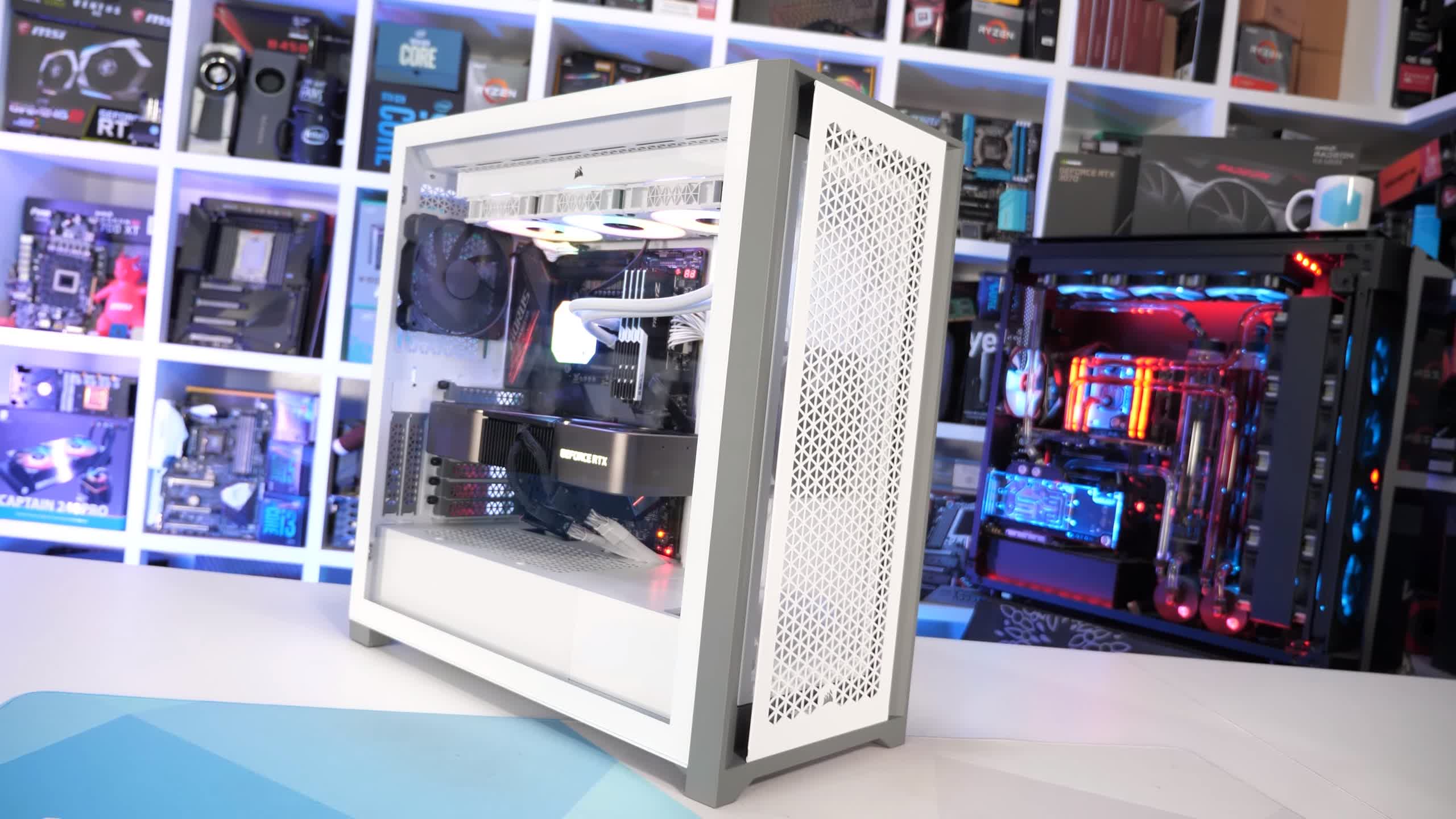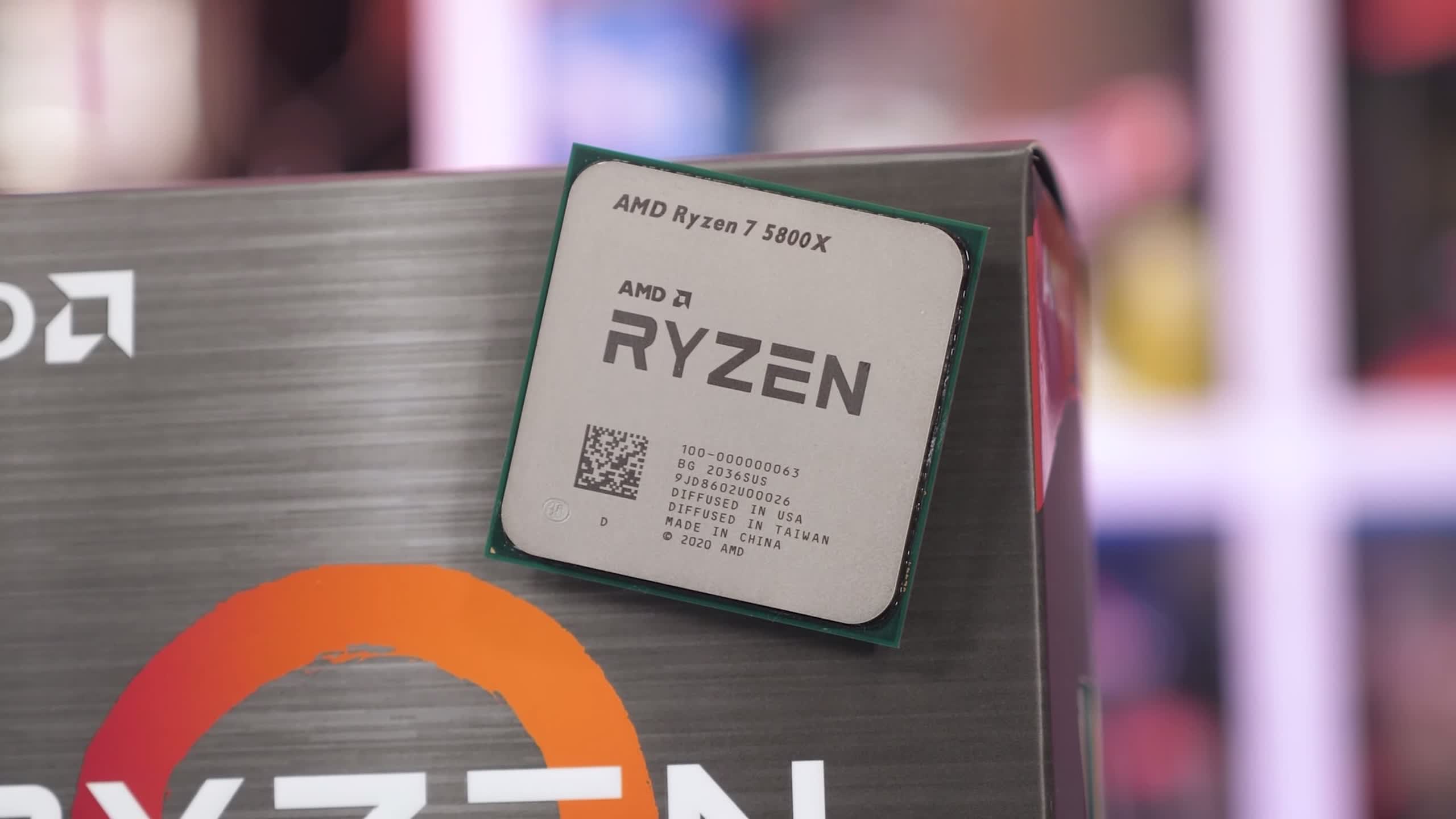As stock shortages of CPUs and graphics cards continues, it's time for an update on the market to see what the current situation is looking like, and whether there will be any relief for buyers in the coming weeks. A previous article on this topic was well received when we released it about a month ago. Since then we've obtained numerous insights and information, so let's get started...
Updated: See our latest GPU Pricing Update here.
GPU Market Update
The most troubled portion of the PC market, it's been a month since our last update and the situation remains that you can't buy a graphics card at the MSRP, which I think won't surprise anyone. There's really no firm end in sight for this issue, with many major companies including TSMC and Nvidia warning that demand will outstrip supply for much of 2021.
However, while companies are quick to point this out, I think it's important to note that these statements don't mean the current situation of low availability and ridiculous pricing will continue as is for the entire year. Nvidia and AMD both expect improvements in the back half of the year, which likely will mean pricing returning closer to normal, and some products with good availability. These comments are more about product lines as a whole, and what will almost certainly happen late in 2021 is that some products will be available while others won't, as demand and manufacturing constraints differ depending on the exact product.
In most regions, not much has changed in terms of actual GPU availability. On Newegg, the cheapest GPU available at anything close to the MSRP is Nvidia's GeForce GT 1030, which you can get for about $120. Cards from the current generation are all out of stock, and cards from prior generations like the RTX 2060 are massively price inflated. No real changes there.
In other parts of the world, we're seeing what we talked about last time: some GPUs are in stock and available to purchase, just at greatly inflated prices. This will vary on the region and the store. At Australia's PC Case Gear, for example, it's actually harder to find an Nvidia GPU than a month ago, while AMD RX 6900 XT and RX 6700 XT graphics cards are available. Many retailers are preferring to distribute these products in raffles or "early access" deals rather than just listing them. This will depend on your local store but again, high prices and low availability remains the reality.
What's Going On?
A number of people in the industry have reached out in the past few weeks to provide more information on why exactly the situation is what is it is, and it can be broken up into three main areas:
#1: AIBs Keep Raising Prices
Card manufacturers (AIBs) themselves continue to raise prices on their products, or maintain high prices. Essentially, while Nvidia and AMD can set a reference price (MSRP) for a particular line of GPUs – let's say the RTX 3070 with its $500 MSRP – the actual board makers have their own list price for their custom board partner versions. As demand remains very high, AIBs are not interested in profits going to the scalper market, so they are progressively raising their MSRPs over time.
We're not going to name any specific AIBs, but we've heard from several retailers that some brands are more aggressive at raising MSRPs than others, and often the prices that you see on retailer websites aren't crazy retailer-inflated prices, but the actual official pricing for those cards in that region as set by the AIB. You might check back a week later and see prices have gone up. Well, that's almost certainly due to the AIBs raising the MSRP once again for the latest batch of stock.
Often these price hikes only apply to higher-end models within a family. So say, an Asus Strix OC versus an Asus Dual model, which keeps the appearance that some cards are more affordable because the lower tier cards aren't subject to the same hikes. If you check on PCCG, for example, the Dual is listed at $1239 out of stock, while the Strix OC is $1659 - a massive price discrepancy there. But when it comes to actually supplying the GPUs, AIBs would only produce the higher-end, higher margin cards at the new, inflated prices and not supply any models at the lower end.
Of course, from an AIB perspective this makes total sense. They want to maximize profits and want to exclusively produce the more expensive variants which they can sell for the highest price. This is likely to continue while demand outstrips supply to a significant extent. In fact, some "vanilla" card models have basically been discontinued entirely as AIBs have indicated they just won't make them, which has caused havoc for retailers that offered pre-orders. If a ton of people pre-ordered a card that then becomes discontinued, the retailer is in a bit of strife, which is why pre-orders on these products aren't available across the vast majority of retailers - the risk is just too high that the card may not exist or may be more expensive to buy when it actually comes time to procure the stock.
#2: Distributors are Screwing Retailers (and You)
The second issue is at the distributor level. While distributors aren't necessarily raising prices on AIB cards themselves in every instance, they are causing issues for retailers through a system called bundling. This is where if a retailer wants to purchase a GPU from a distributor, the distributor only makes that GPU available if they also buy more harder to move components in other segments.
One thing we've commonly heard from several retailers is that if they want to buy a single new graphics card, they may be required to buy something like 50 budget AMD A520 motherboards in a bundle as well. If they can't then sell those motherboards, this puts a burden on the retailers and may lead them to increase the GPU price to offset the potential losses they're forced to take in accepting other components as part of the bundle deal.
This is also why you see many deals at retailers where you can buy a graphics card bundled with some other component, like a motherboard, storage, power supply or cooler. It's because retailers have to buy those components in order to get the graphics card, as a cheeky way for the distributors to palm off unwanted stock to retailers and cash in, putting the burden on the retailers. This issue alone is the source of immense frustration from every retailer we've spoken to.
These bundle deals can take different forms depending on the distributor. Some bundle graphics cards exclusively with their in-house pre-built PC options, which retailers would then resell as entire systems under their own brand. Others are providing a mixture of bundle deals and standalone products, but significantly inflating the pricing on the standalone cards. Some are providing fair prices without bundles, but extremely limited quotas, although this is less common than the other methods of providing GPU stock. One retailer even told us that these bundle deals are getting more extravagant over time, with distributors attempting to package in more and more expensive motherboards or hard drives in successive months.
One person we spoke to shared their disappointment that GPU buyers are paying ridiculous prices at retail, but those inflated prices aren't trickling down to the actual GPU designers who do the hardest work and could invest that in next-generation products.
Unfortunately we've still been unable to find anyone at a distributor that wants to talk with us about GPU supply, so we don't have their side of the story. But the situation we're hearing from multiple parties - whether that's retailers, AIBs or even the GPU companies themselves - is that distributors are playing a role in making it harder for everyday consumers to purchase a GPU through these tactics, and profiting in the process. One person we spoke to shared their disappointment that GPU buyers are paying ridiculous prices at retail, but those inflated prices aren't trickling down to the actual GPU designers who do the hardest work and could invest that in next-generation products.
#3: Supply Chain Issues
In addition to AIB price gouging and distributor bundling, there's a third problem, and that's the genuine ongoing supply chain issues that are affecting the chip industry as a whole.
We briefly touched on this in the previous article and we've been reporting on chip shortages at various levels for weeks now, with everyone in the space being supply constrained. When we say supply is unable to meet demand, we don't mean supply is below a normal level in a normal market, because products are flying off the shelves at record rates and revenue is at an all-time high. Rather, supply is constrained and limiting this demand from being met.
As a recap, fabs are limited on the number of chips they can supply. TSMC supplying AMD, and Samsung supplying Nvidia cannot produce any more GPUs than they currently are. On top of this, there are ongoing issues with raw material supply, substrates, GDDR memory and other components that are all part of the graphics card manufacturing process.
In short, graphics cards are more complex and require more components than something like a CPU, so they are more susceptible to supply chain problems. Graphics card manufacturers continue to tell us that component supply is slowly improving, but still short of where it needs to be, and this is being compounded by logistics issues like increased freight costs and tariffs depending on the region.
What About Miners?
Now you might be wondering, we've talked about three issues, but none of those problems are mining. How do those pesky miners factor into this equation? Can't we just get angry at the miners?
This is partially true, but mining is still just one part of a complex situation. The reality is that mining is increasing demand, which is putting pressure on all the other areas of the supply chain and causing reactions like inflated AIB pricing and distributor shenanigans.
Despite all of these considerations and concerns, the overall GPU market has actually improved slightly compared to when we checked a month ago. It may not appear so at first glance – you still can't buy a GPU at a reasonable price, which is what everyone is waiting for – but in general, there are small signs that we're on the road to recovery, so let's work through them.
Scalper Pricing / Market Pricing
The last time we checked in on the scalper market – which is where we can get a true idea of current GPU pricing and what people are willing to pay – prices were relatively flat over a one month period. That also coincided with a relatively flat period of cryptocurrency growth, so the thinking was that if crypto prices weren't rising, that isn't increasing GPU demand nor pricing.
For this article, we've looked at GPU pricing over the past week and compared that to a similar period from the prior month for all of the current generation GPUs. The data was gathered from completed eBay listings for brand new graphics cards in the U.S. market. Once again we see a trend that's relatively flat month on month, so for roughly two months we've basically been at the peak of GPU pricing on the scalper market.
The good news is that GPU prices are not rising and haven't been over a consistent period now.
The good news is that GPU prices are not rising and haven't been over a consistent period now. This is evidence that the limit on what buyers are willing to pay for a new GPU has been reached. And the markup that buyers are willing to spend on a GPU does vary between models.
| MSRP | eBay Average Price March | eBay Average Price April | Price Inflation in March | Current Price Inflation | Price Increase March to April | |
|---|---|---|---|---|---|---|
| GeForce RTX 3090 | $1,500 | $3,083 | $3,126 | 106% | 108% | 1% |
| GeForce RTX 3080 | $700 | $2,256 | $2,175 | 222% | 211% | -4% |
| GeForce RTX 3070 | $500 | $1,374 | $1,400 | 175% | 180% | 2% |
| GeForce RTX 3060 Ti | $400 | $1,297 | $1,405 | 224% | 251% | 8% |
| GeForce RTX 3060 | $330 | $905 | $884 | 174% | 168% | -2% |
| Radeon RX 6900 XT | $1,000 | $1,870 | $1,814 | 87% | 81% | -3% |
| Radeon RX 6800 XT | $650 | $1,560 | $1,480 | 140% | 128% | -5% |
| Radeon RX 6800 | $580 | $1,340 | $1,330 | 131% | 129% | -1% |
| Radeon RX 6700 XT | $480 | $1,165 | $967 | 143% | 101% | -17% |
| Average | 156% | 151% | -2% |
Nvidia GeForce GPUs are considerably more inflated than AMD's. The RTX 3070 is currently selling at 180% above MSRP, or 2.8x its $500 MSRP at $1,400 on average. For cards with the weakest supply, the RTX 3080 and RTX 3060 Ti, you're looking at paying at least three times their regular price, but again, that figure hasn't moved over the last few months (aside from the virtually non-existent 3060 Ti).
Meanwhile, AMD Radeon GPUs range from 2 to about 2.3x their MSRPs. The 6700 XT has even dropped in price by 17% comparing to the period just after its launch, a byproduct of decent 6700 XT supply, while the 6900 XT is sitting at a relatively modest 81% price inflation which is lower than every other current generation GPU.
This means that buyers actually willing to pay a scalper price are far better off buying a Radeon GPU than GeForce. The 6700 XT currently offers much better value than the RTX 3070, not just in the scalper market but also at retail with a number of cards. The average price for the 6700 XT is $967 compared to $1,400 for the RTX 3070, making the 3070 45% more expensive for ~5% better gaming performance on average based on our performance testing.
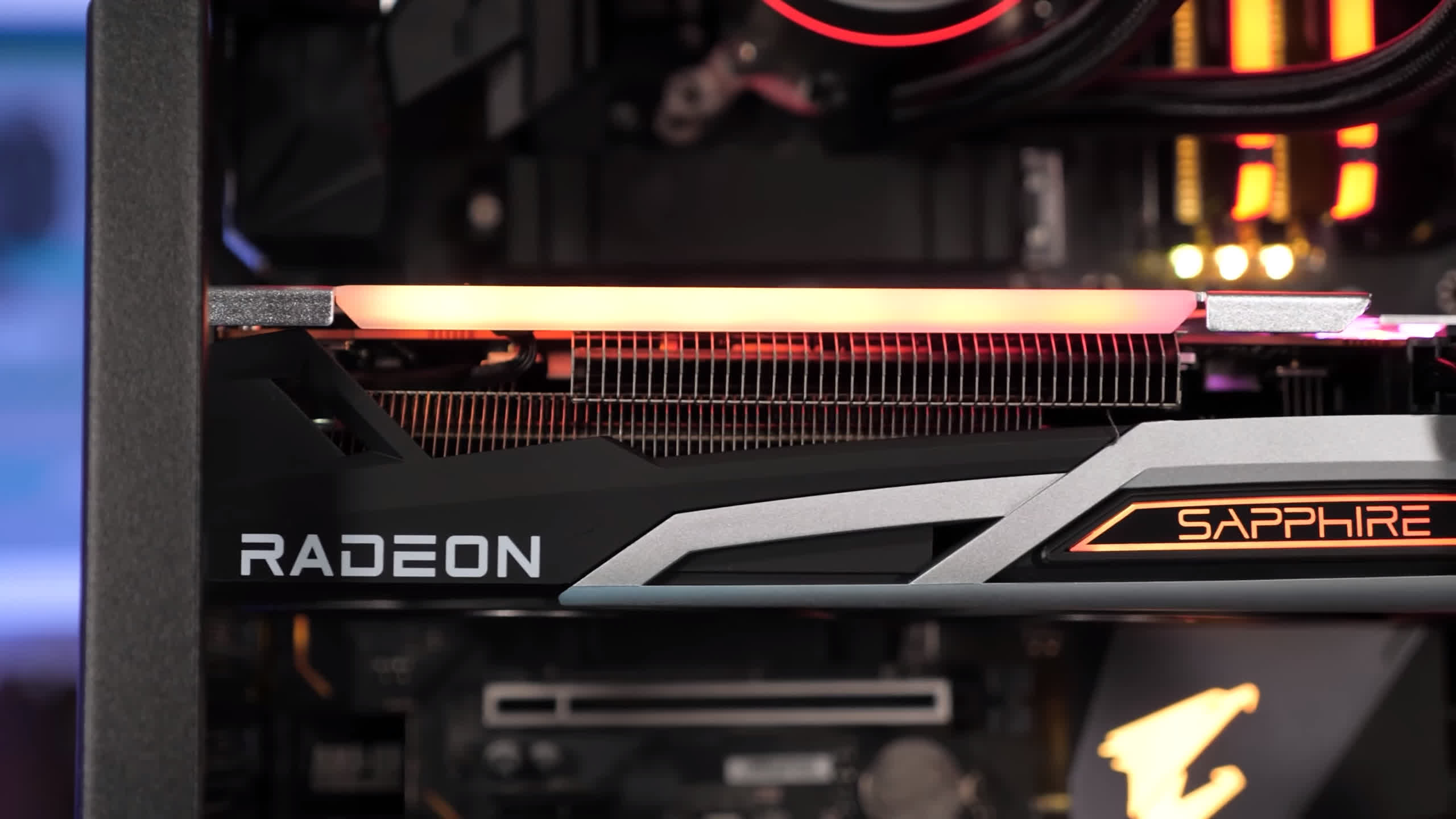
Other comparisons also favor AMD because of less inflated pricing. The RX 6800 is currently a little bit cheaper than the RTX 3070, despite offering 13% higher frame rates on average at 1440p. A similar thing can be seen for the RX 6800 XT versus RTX 3080. The average scalper price for Nvidia's GPU is 47% higher despite offering almost identical performance. In games that is, not in mining, which I don't know how these cards perform and frankly don't care.
Now I'm not saying to go out and pay these insane GPU prices on eBay but it is an interesting look at what people are actually paying right now for GPUs.
We've heard that AMD supply is slowly improving and that does seem to be having flow on effects in this market, where Radeon offers significantly better value for those that are desperate and are willing to pay inflated prices. The price hikes on GeForce GPUs are absolutely disgusting and while I couldn't recommend people pay these prices on Radeon GPUs either, you definitely shouldn't pay nearly three times the MSRP on a GeForce card.

The promising thing to note here is that GPU prices have remained steady despite monthly growth in the crypto market. I'm not a crypto expert, so I did have to do more than the zero research I normally do into the crypto market, but the trends seem clear. While Bitcoin was relatively flat month over month in the period I looked at, Ethereum – a highly popular coin for mining on GPUs – is up 24%. And then across the CoinDesk 20, which they describe as the "top 20 assets" in the crypto market with "roughly 99% of the market by volume", the average month-on-month increase for these coins was 41%. Some coins flat, some declined slightly, some saw significant growth, but on average 41%. Of course, this will change over time with the highly volatile nature of the crypto market, but this was the snapshot I took over the same period I used for the GPU sales information.
It's not the big crash in GPU prices that people want, but it's a positive sign.
This doesn't provide us with any insight into when GPU pricing will return to normal, but for now we're mostly interested in short term trends: are GPU prices flat, increasing or decreasing? Flat or downward trends are what we're looking for, while an increase would be disastrous. And that's where the GPU market stands.
CPU Market Update
The CPU market has had a more straightforward trajectory and there's been a lot of improvement compared to when we talked about it last month.
A big change to this market has been the introduction of Intel's 11th generation Rocket Lake processors. While not all of these processors were well received – the Core i9-11900K is not good – Intel does offer a lot of value and performance in the lower end of the market. Chips like the Core i5-11400F and the previous-gen Core i5-10400F remain the best value processors on the market for gamers, and both are readily available across major retailers.
In what's great news for system builders, demand for Intel's 11th-gen parts is low, according to discussions we've had with retailers. This means we didn't see the usual rush of sales after the product's launch, which usually inflates pricing and lowers availability. Instead, most of the 11th-gen parts can be picked up at the MSRP right now, or in some cases at a discount. The Core i7-11700K has already dropped from $420 to $400, and you'll see similar minor discounts on a few other CPUs in the freshly released line.
While 10th-gen Comet Lake processors are discontinued, they too remain reasonably available. The Core i9-10850K, Core i7-10700KF, and Core i5-10400F just to name a few are all available at decent prices or discounts, with a part like the eight-core 10700KF priced at $300, the same as AMD's six-core Ryzen 5 5600X. That sort of value and competition is making the CPU market quite strong right now, with good availability on the Intel side.
The one exception appears to be the Core i9-11900K surprisingly, which despite its poor reception is hard to find and being sold at inflated prices. On the upside, the CPUs you might actually want to buy, and those you should buy, are all available, so it might be a good time to consider a CPU upgrade.
On the AMD side, whether supply has improved will depend heavily in your region. In the United States, not much has changed: the Ryzen 7 5800X is readily available at its $450 MSRP, while the cheaper Ryzen 5 5600X is touch and go for availability at its $300 MSRP. They're available at Microcenter at that price for example, but you're looking at a price premium on Newegg and Amazon, so it depends. Older CPUs in AMD's line-up like the Ryzen 5 3600 and Ryzen 7 2700X continue to be sold at roughly their original launch price or sometimes higher, which makes them poor value compared to Intel. That situation won't change until the 5600X stabilizes or AMD releases a newer, cheaper Zen 3 part in the sub-$300 price range.
In the United States, you'll probably find it hard to buy either of AMD's Ryzen 9 processors, the 5900X or 5950X, with most retailers not having enough stock. But what we're hearing is that supply is improving quite a bit for these parts and should be decent within a few months. In Australia, for example, you can pre-order a 5900X with an ETA of just one week, whereas last month the final launch day orders were being fulfilled.
In other regions, the Ryzen 9 5950X has gone from unavailable to available over the last month. Overclockers in the UK currently has a small amount of stock, while Mindfactory can ship you any of AMD's Ryzen 5000 processors, including a tray version of the 5600X. Based on this, it shouldn't be long until the CPU market has fully stabilized, and I'd expect that in next month's stock update that we're looking at a relatively healthy CPU market compared to what we've dealt with over the last few months.
This might have flow on effects for other products as well, especially on the AMD side. If they are able to meet demand for Ryzen 5000 desktop processors, then over time they should be able to allocate any excess 7nm supply from TSMC to other lower-stock products, whether that's graphics cards or APUs. It could also open the door for a Ryzen 5 5600 type product, if AMD wants to go down that path and challenge Intel's current lead in the budget CPU market.
It's honestly quite refreshing to talk about CPUs in this way because availability for new products like Ryzen 5000 has been awful for months. The market isn't great, but it does appear to be recovering and that's good news for people wanting a system upgrade. Unfortunately it won't help GPU buyers too much, but that's the next issue to be tackled.
We'll keep monitoring CPU and GPU prices and keep you in the loop. Also don't forget you can watch pricing history in our Product Finder and create email alerts, so you're notified when a price drop occurs.
Shopping Shortcuts:
- Intel Core i5-11400F on Amazon
- AMD Ryzen 7 5800X on Amazon
- AMD Ryzen 5 5600X on Amazon
- Intel Core i5-11600K on Amazon
- Intel Core i7-10700KF on Amazon
- Nvidia GeForce RTX 3070 on Amazon
- AMD Radeon RX 6700 XT on Amazon
- Nvidia GeForce RTX 3080 on Amazon
- AMD Radeon RX 6800 on Amazon
- AMD Radeon RX 6800 XT on Amazon







